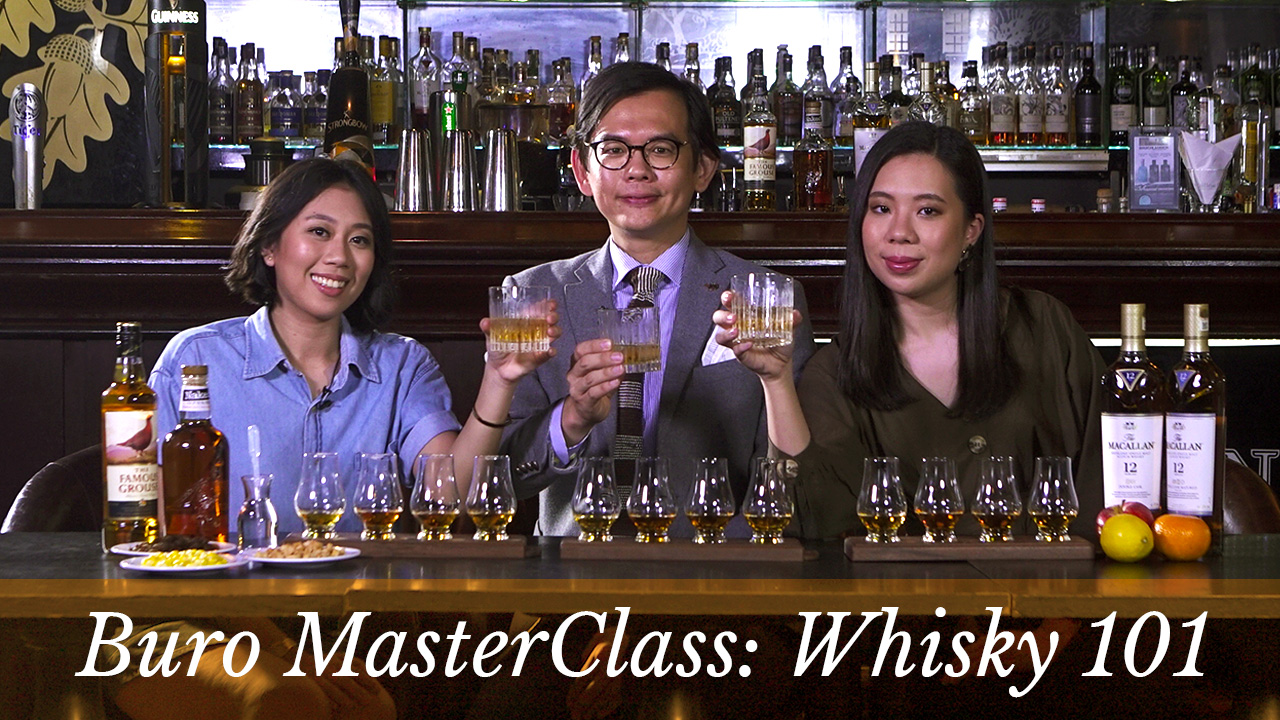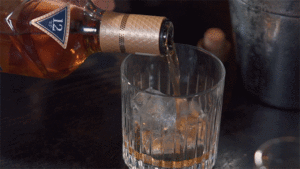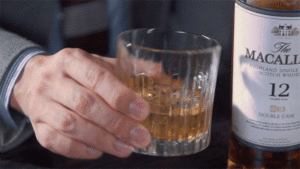Buro MasterClass: Whisky 101 and tips for beginners (especially if you’re a non-whisky drinker)

Previously, we’ve curated a beginner’s guide to both wine and champagne but these two are among the most popular drink choices, and the more approachable ones as compared to good ol’ whisky. Few know how to appreciate it—and those who do know full well of its treasured value—and many are too intimidated by its image, smell and taste; all because of several age-old misconceptions.
“Whisky is for older men.” “Whisky isn’t a woman’s drink.” “Whiskies all taste the same.”You name it, you’ve probably heard it before. This Buro MasterClass (video above) with sommelier Thomas Ling is here to debunk all that and help you explore the world of whisky, along with some tips to help you “nose” and “savour” this brown spirit a little better.
Is there a difference between whisky with and without an ‘e’?
“That’s one of the most common questions. As we all know, the origins of whisky is arguably from Ireland or Scotland; and they speak the traditional gaellic language and so, there’s a slight variation in terms of spelling. So whisky from Ireland—where it was first made but perfected by the Scotch—is spelt with an ‘e’ while in Scotland, they do away with it.”

beginners guide to whisky
So there are two main types of whisky—one that’s made from malt and another that’s made from grain. What’s the biggest difference and how do we tell it by taste?
“Whiskies are all made from different types of grains: barley, corn, wheat, rye, etc. It depends where the whisky is made and where the abundance of these materials are found. Generally, the main/base ingredient for malt whisky is malted barley, which you’ll be able to find hints of honey and fruit-driven nuance aromas.
Grain type of whisky is basically those made from other grains besides malted barley. For example, whisky in the US is made predominantly from corn so it’s a bourbon whisky and it’s generally sweeter, richer and fruitier in taste. Whisky made from grains such as rye or cereal tend to give off a tinge of spice or cereal notes, which can add to the interesting flavour expressions of whisky.”
How can you tell if a whisky is great or not particularly good?
“At the end of the day, whisky is a personal preference as well as a personal enjoyment. A whisky that you don’t like is basically not a great whisky. However, if you’re looking at it from the aspect of appreciation, then a good whisky can be judged by the three ‘S’es we used earlier—’Sight’, ‘Smell’ and ‘Savour’.
In terms of sight, the colours should be bright—not dull or cloudy—and correspond to the style of whisky that’s labelled. For smell, a good whisky should have at least two or three discernable characters. If it’s one-dimensional, or if all you can smell is the alcohol, then it’s not a very well-made whisky. For example, when we were nosing the whiskies just now, we got aromas of coffee, coconut, toffee, sultanas, raisins, nuances of citrus—these add to the complexity or definition of a great whisky.
Last, but not least, the taste. When tasting it, you should be able to feel textures and how well it integrates on the palate. The more commonly used word to describe it would be ‘very smooth’ or ‘not too harsh’.
Those are all the telltale signs of a good or great whisky and its character.”

whisky tips for beginners
Team Buro’s Choice: The Macallan 12 Years Double Cask
With a golden hue as vibrant as the harvest sun and a top note of creamy butterscotch, toffee, candied orange and fresh oak, it’s easy to like The Macallan 12 Years Double Cask. Just the sound of those rich aromas is enough to make one feel warm and tingly inside. It’s even more beautiful on the palate—balanced with honey sweetness, citrus and caramel, and topped off with a finish that’s warm, sweet, drying with a lingering oak.
But tasting notes aside, there’s a reason for its approachable yet elegant expression and character: The Macallan’s renowned 100 per cent sherry-seasoned Oak cask aging tradition. More specifically, the unmistakable American oak style that’s used. Together with the European Oak, it is the perfect marriage to create a single malt whisky that’s suitable for all occasions and appeals to the wider audience, especially beginners.
Credits:
Videography: Octopost Studio
Art Direction: Yi Suen Chong
Location: The Whisky Bar KL, Changkat
| SHARE THE STORY | |
| Explore More |



